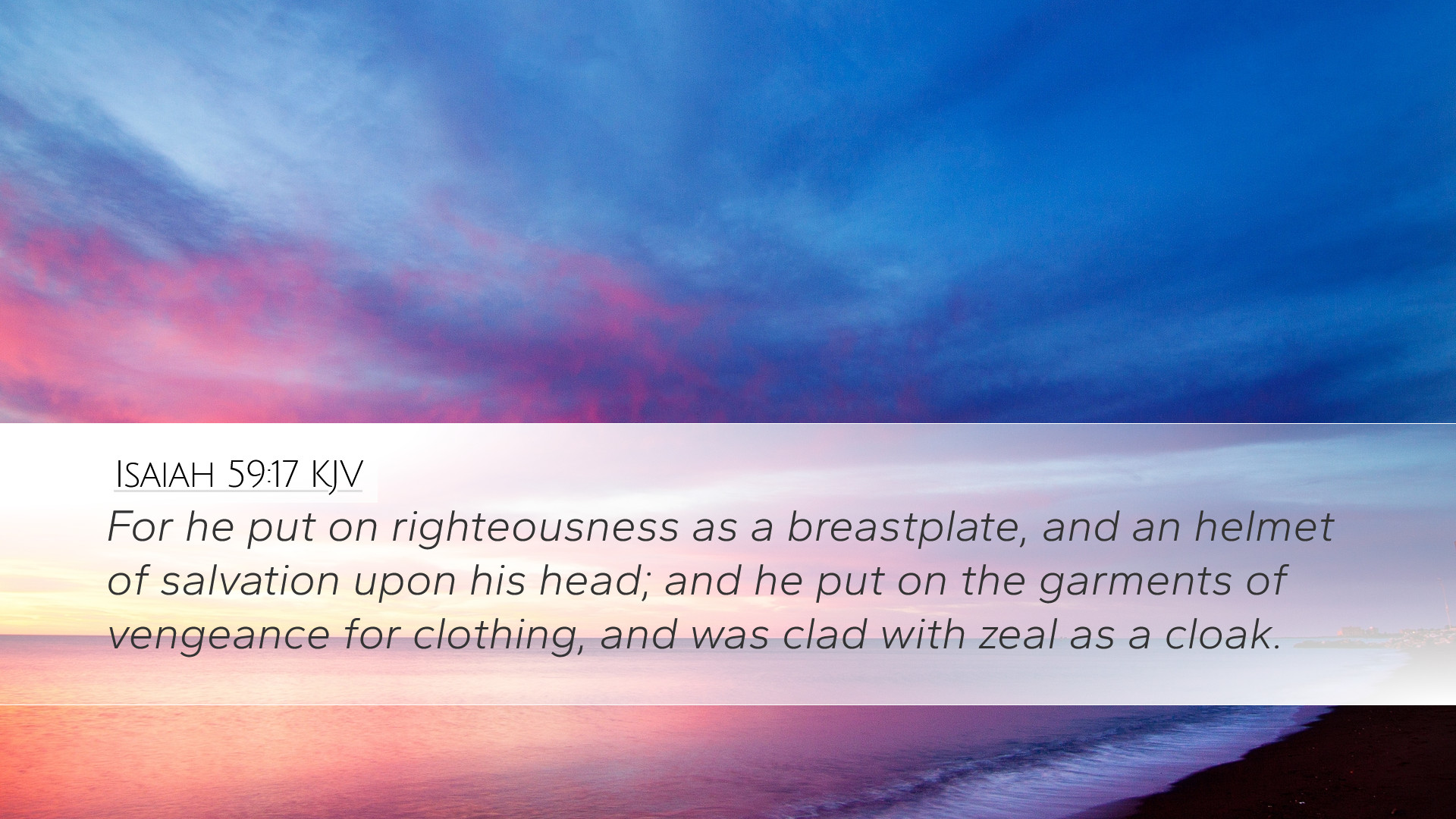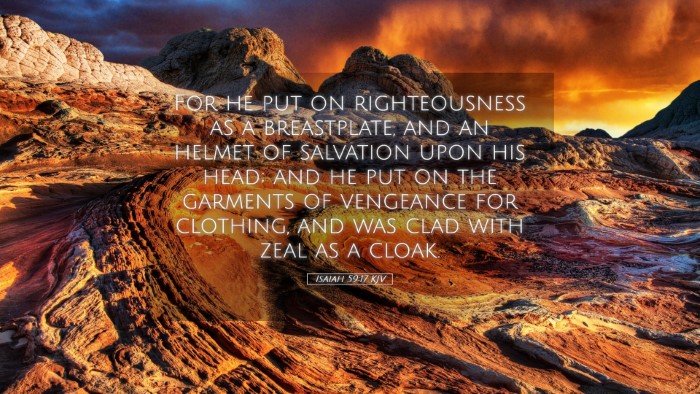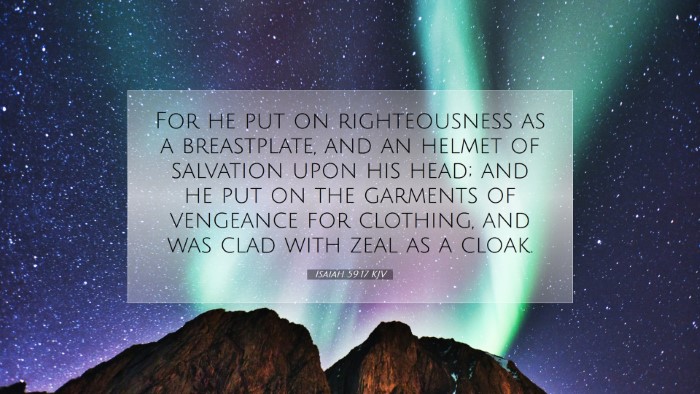Commentary on Isaiah 59:17
"For he put on righteousness as a breastplate, and a helmet of salvation upon his head; and he put on the garments of vengeance for clothing, and was clad with zeal as a cloak."
Introduction
Isaiah 59:17 is a profound verse that encapsulates several key themes of divine action, protection, and justice. Commentaries from scholars in the public domain offer insights into its theological implications, literary elements, and practical applications.
Contextual Analysis
The context of this verse within Isaiah 59 highlights a grim reality of sin and its consequences for Israel. This chapter portrays the separation brought about by sin and God's ultimate response to moral decay. The description of God as a warrior equipped for battle underscores His readiness to confront evil and dispense justice.
The Armor of God
In this verse, the imagery of armor is pivotal. According to Matthew Henry, the "breastplate of righteousness" signifies the holiness of God that protects against accusations and guilt. Righteousness is not only a divine attribute but a standard that God enforces in His covenant people.
Albert Barnes observes that the "helmet of salvation" represents the assurance and hope that believers possess, emphasizing the protective nature of salvation against despair and doubt. This hope serves as an anchor during tumultuous times.
Divine Justice
The garments of vengeance indicate that divine righteousness and justice will ultimately prevail. Adam Clarke notes that God’s assumption of vengeance reflects His commitment to righteousness. He does not merely react; rather, He actively engages in ensuring that justice is served.
This concept of divine vengeance is challenging for modern readers but underscores the truth that God will not let injustice go unaddressed. God’s zeal, manifested as a cloak, expresses His passion for reconciliation and His commitment to His covenant with His people.
Theological Implications
Theologically, this verse reinforces the concept that God is both a protector and a warrior. As discussed by Matthew Henry, the dual role of God as both merciful and just reveals His perfect nature, which maintains order in the universe. This balance is essential for understanding the character of God.
Albert Barnes adds that the imagery is intended to boost the faith of the people, assuring them that God is actively involved in their struggles. This divine assurance is essential for believers facing persecution or distress.
Application for Believers
For pastors and theologians, this verse serves as a rich text for preaching on the nature of God and His commitment to His people. It invites believers to consider the armor of righteousness in their lives. The protective nature of God’s armor encourages self-examination and alignment with God’s will.
- Righteousness: Reflect on personal integrity and holiness.
- Salvation: Embrace the hope and assurance found in Christ.
- Justice: Advocate for justice in societal issues, reflecting God's character.
- Zeal: Cultivate a passionate commitment to God's mission.
Conclusion
Isaiah 59:17 stands as a testimony to God’s unwavering commitment to justice and righteousness. The armor imagery invites believers to adopt these divine attributes in their lives, empowering them to stand firm against injustice. The insights from Matthew Henry, Albert Barnes, and Adam Clarke reveal a rich tapestry of meaning that continues to resonate with pastors, students, and scholars alike.
Ultimately, this verse not only demands theological reflection but also calls for a transformative response in the believer’s walk with God.


